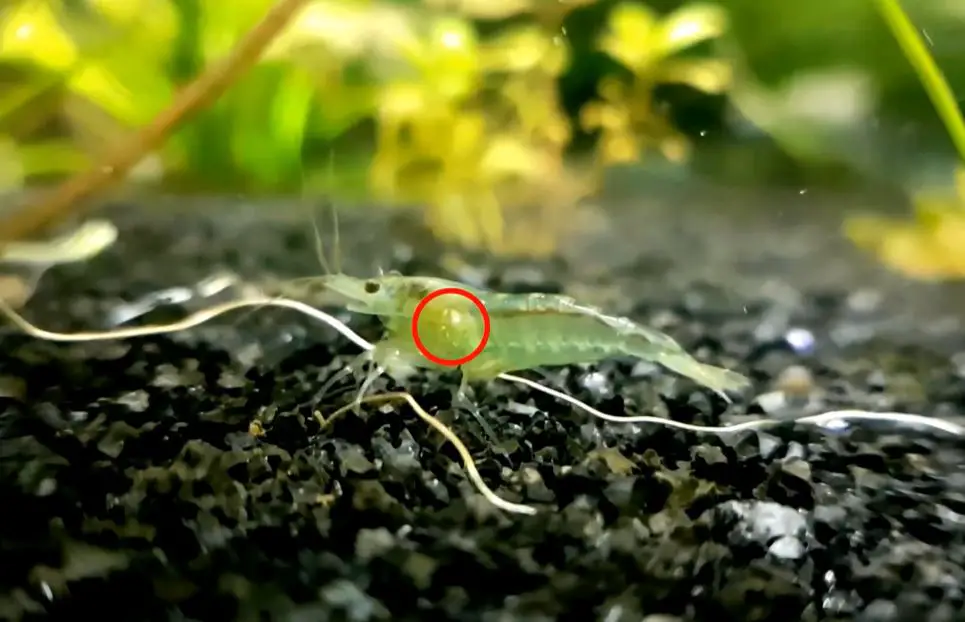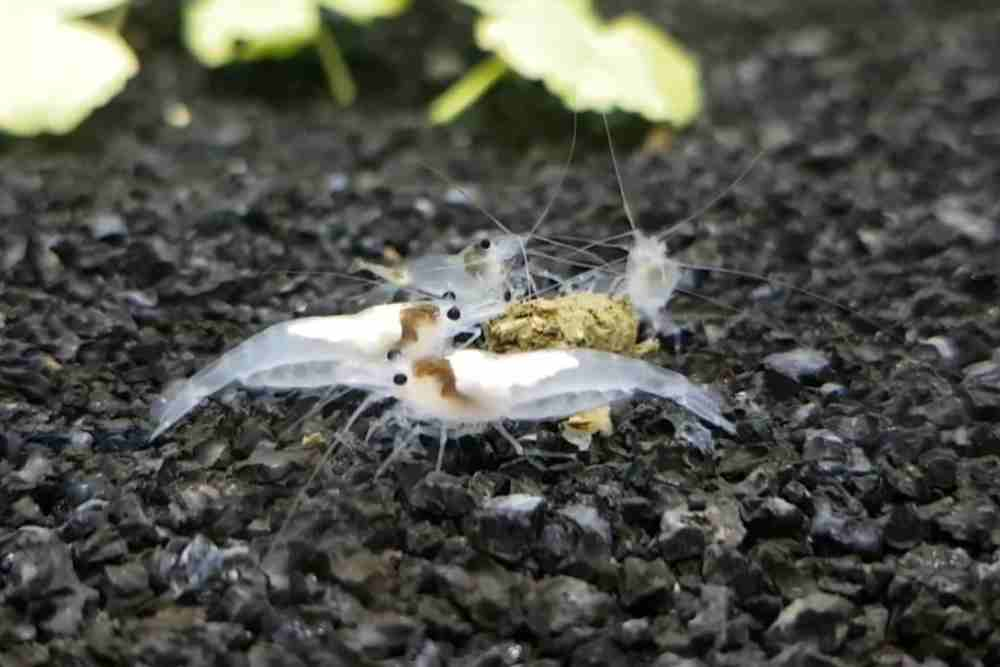If you’re an aquarium enthusiast or a shrimp owner, it’s crucial to be aware of the signs and symptoms of this parasitic infection that can affect your shrimp.
In this article, we will explore the various indicators that may suggest the presence of Scutariella japonica in shrimp, such as abnormal growths and behavioral changes.
Scutariella japonica, a type of a microscopic protozoan parasite seen in ornamental shrimp that might harm the species when the number of parasites is high.
Furthermore, we will delve into effective treatment options, including salt treatment, removing shrimp molts, and the use of medications.
By understanding the signs and implementing appropriate treatments, you can ensure the well-being of your shrimp and maintain a healthy aquatic environment.

Causes of the Occurrence of Parasite Scutariella japonica in Aquarium Shrimp?
The occurrence of the parasite Scutariella japonica in fish aquariums can be attributed to several factors. Here are some common causes:
1. Introduction of infected shrimp
When introducing new shrimp into the aquarium, they may already be carrying Scutariella japonica parasites.
If these infected shrimp are not properly quarantined or treated before being added to the aquarium, they can introduce the parasites to the existing aquatic ecosystem.
2. Contaminated water or substrate:
The parasite can be present in the water or substrate of the aquarium.
If the water or substrate is contaminated with infected eggs or larvae, it can lead to the infestation of Scutariella japonica in the shrimp and other aquatic inhabitants.
3. Poor Tank Hygiene
Inadequate tank maintenance and poor cleanliness practices can create an environment conducive to parasite growth.
Accumulation of waste, uneaten food, and decaying organic matter can provide a breeding ground for parasites, including Scutariella japonica.
4. Stress and Weakened Immune System
Shrimp that are stressed or have weakened immune systems are more susceptible to parasitic infections.
Factors such as poor water quality, improper nutrition, overcrowding, and sudden changes in environmental conditions can weaken the shrimp’s immune system, making them more prone to infestation.
5. Cross-Contamination
Sharing nets, equipment, or water between infected and uninfected aquariums can lead to the spread of parasites.
Care should be taken to avoid cross-contamination and ensure separate and proper sanitation of equipment when dealing with different aquariums.
6. Lack of Quarantine Protocols
Neglecting to quarantine new additions, including shrimp or other aquatic organisms, before introducing them to the main tank can increase the risk of introducing parasites.
Quarantine periods allow for observation and treatment of potential infections before introducing them to the established aquarium.
Morphology of Scutariella japonica
Body flattened, soft. Body end has a sucker attached to a shrimp body. Horse- shaped adhesive attachment organ. Intestine filled with shrimps’ hemolymph. On the other end it has a kind of primary tentacles.Life Cycle of Scutariella japonica
Scutariella japonica is a parasitic flatworm that infects the gills and skin of freshwater fish, especially carp, goldfish.
Adult females are up to 5 mm long, attach themselves to the gills of the host fish, and lay eggs embedded in a gelatinous matrix. The eggs hatch into free-swimming larvae called.
Which infect freshwater snails of the genera Semisurcospira and Bithynia. Myracidia invades the snail’s tissue and grows into a sporocyst, which causes redia. Redia then produces cercariae, which are released into the water.
Radia can swim for hours and actively seek out and infect host fish. Once it is made inside the fish, the cercariae lose their tails and become encapsulated in the gill filaments and skin as metacercariae. Metacercariae grow into adults and complete their life cycle.
The life cycle is completed in two to three weeks, depending on water temperature and other environmental factors. In heavily infected fish populations, parasite burden can lead to respiratory distress, reduced growth rate, and increased mortality.
Therefore, it is important to maintain good water quality and prevent the spread of infected fish to minimize the impact of this parasite on aquatic ecosystems.
Geographical Distribution of Scutariella japonica
Scutariella japonica is a parasitic crustacean that primarily infects the gills of freshwater fish. It is native to East Asia, specifically Japan, China, and Korea.
However, due to the international trade of shrimp and the accidental transportation of infected shrimp, Scutariella japonica has been reported in other parts of the world as well.
Outside of its native range, Scutariella japonica has been found in various countries including the United States, Canada, Australia, and several European countries.
These introductions are often associated with the importation of ornamental fish or the transfer of fish for aquaculture purposes.
The geographical distribution of Scutariella japonica can vary within these countries, as it depends on factors such as the availability of suitable hosts and the presence of suitable environments for the parasite’s survival.
Fish Species Affected by Scutariella japonica
Scutariella japonica is a parasitic flatworm that commonly affects freshwater fish, especially goldfish and koi.
In this case, the parasites can take their toll, as they impair the shrimp’s respiration and motility and destroy the host’s body structures.
This parasite use the shrimp as a mobile base (e.g. by attaching itself to the rostrum) to obtain organic matter from the water column and can also lead its parasitic life with the shrimp as a host (e.g. by it attaches itself to the gills).
This adaptability, Scutariella japonica can become dangerous for aquarium shrimp farming, as it easily infects not only weakened but also healthy individuals.
Sign & Symptoms by Scutariella Japonica

The small white creatures measuring 1 to 2 millimeters in size on top of the shrimp’s head or rostrum.
These are identified as the parasitic nematodes known as Scutariella japonica.
They may also attach to the shrimp’s legs and other body parts, although less frequently. Scutariella japonica tends to attach somewhere between the shrimp’s eyes or on the rostrum. They generally stick to the head region.
The parasites lay their eggs in rows or patches on the shrimp’s gill plate. These eggs can be an additional indicator of the presence of Scutariella japonica.
In most cases, they latch on to the shrimp’s rostrum or midway between eyes. Seeing them on shrimp legs or other body parts is extremely uncommon.
Diagnosis of Scutariella japonica
These parasite can be diagnosed by observing the physical characteristics of the parasite and its effects on the infected fish.
Diagnosing Scutariella japonica in shrimp aquariums typically involves careful observation and examination of the shrimp’s physical characteristics.
Here are the steps to diagnose the presence of Scutariella japonica in shrimp:
1. Visual inspection
Observe the shrimp closely, paying attention to any abnormalities on their rostrum (head), legs, or other body parts.
Look for small white creatures, approximately 1 to 2 millimeters in size, attached to the shrimp. These may be Scutariella japonica parasites.
2. Gill Plate Examination
Check the shrimp’s gill plate for the presence of eggs. Scutariella japonica parasites often lay their eggs in rows or patches along this area.
3. Behavior observation
Monitor the shrimp for any unusual behavior, such as excessive scratching or rubbing against surfaces. Infected shrimp may exhibit signs of irritation or discomfort due to the presence of parasites.
4. Additional symptoms
Look out for other symptoms like growths, discoloration, or changes in appetite. These signs can also indicate a possible infestation of Scutariella japonica.
How To Prevent Aquarium Shrimp From Scutariella japonica Parasitic Infection?
The following are some measures that can be taken to prevent their occurences;
Quarantine new shrimp: Newly acquired shrimp should be quarantined for a period of time to ensure that they are free from any parasites or diseases before being introduced to the main aquarium.
Maintain good water quality: Proper aquarium maintenance, including regular water changes, filtration, and monitoring of water parameters, can help prevent the buildup of harmful bacteria and parasites, including Scutariella japonica.
Avoid overcrowding: Overcrowding in the aquarium can increase stress and susceptibility to parasitic infections.
Avoid introducing wild-caught fish: Wild caught shrimp are more likely to carry parasites, including Scutariella japonica, compared to captive breed shrimp.
Avoid cross-contamination: Prevent cross-contamination between tanks by using separate equipment, nets, and tools for each aquarium. This minimizes the risk of spreading parasites or infections from one tank to another.
Proper tank hygiene: Maintain good tank hygiene by regularly cleaning and removing debris, uneaten food, and molts from the aquarium. This reduces the chances of parasites and infections thriving in the tank. UV sterilization can help reduce the number of parasites, bacteria, and other harmful microorganisms in the aquarium.
How Do You Treat Scutariella japonica in Shrimp?

1. Isolation
You should immediately separated from healthy fish to prevent the spread of the parasite. This is the first step of treating the affected shrimps in you tank.
2. Salt Treatment
You can use freshwater aquarium salt (without iodine) to treat external parasites. You can demonstrates a quick and simple method for treating shrimp using salt.
The process involves taking a container, adding salt (marine or aquarium salt), and mixing it with water.
The method involves adding 1 tablespoon of salt to a cup of aquarium water, dissolving the salt, briefly immersing the affected shrimp in the salty water for about 20 seconds, and then returning the shrimp to the aquarium.
This treatment aims to eliminate the parasites from the shrimp’s rostrum, but may not affect any eggs within the exoskeleton.

Aquarium Salt
- Disease prevention, aids in osmoregulation, reduces stress, promotes wound healing, and improves water quality.
3. Removing Shrimp Molts
You can regularly check the tank and remove shrimp molts for a couple of weeks. The parasites or eggs are said to be primarily attached to the molt rather than the shrimp themselves, so removing the molt reduces the chances of the parasite spreading.
4. Dosing with Medication
You may use a medication called Paragard, which is a mild treatment for parasites. The recommended dosage from the bottle instructions is used.
The Paragard is not necessary but can help in killing additional parasites and reducing their spread. It also suggests that using salt alone (without Paragard) may be sufficient.
5. Water Changes
Perform regular water changes after ensuring that you will be available to monitor the tank for the next two days.
Increased shrimp molting is expected after water changes, and promptly removing the molts during this period helps reduce parasite spreading.
6. Cleaning
Once the infected shrimp have been treated, the aquarium should be thoroughly cleaned to remove any remaining parasites or their eggs.
This includes replacing the water, cleaning the filter, and scrubbing any decorations or equipment.
References
- Shimazu, T., Yamazaki, N., & Uchida, H. (2017). Parasitism by Scutariella japonica (Monogenea) in cultured ayu (Plecoglossus altivelis) and control using a medicinal leech, Hirudo nipponia. Journal of fish diseases, 40(3), 351-358.
- Kawakatsu, M., & Muramatsu, M. (1994). Scutariella japonica sp. nov.(Monogenea: Microcotylidae) from the gills of the black porgy, Acanthopagrus schlegeli (Sparidae), cultured in Japan. Journal of the Helminthological Society of Washington, 61(2), 237-241
- First report of freshwater atyid shrimp, Caridina formosae (Decapoda: Caridea) as a host of ectosymbiotic branchiobdellida, Holtodrilus truncatus (Annelida, Citellata)
- First report of Scutariella japonica (Matjašič, 1990), an epibiont from South-East Asia, found on introduced ornamental freshwater shrimp in European waters.
- Li, W., Zhang, J., Huang, T., Yu, L., & Li, A. (2020). The complete mitochondrial genome of Scutariella japonica (Monogenea: Microcotylidae) and its phylogenetic implications. Parasitology Research, 119(6), 1787-1796.
- Noga, E. J., & Levy, M. G. (2017). Scutariella japonica: a review of a fish gill monogenean from the perspective of pathogenicity. Journal of Fish Diseases, 40(6), 731-743.
- Park, S. D., Hong, J. H., Kim, Y. O., & Park, M. A. (2017). Control of Scutariella japonica (Monogenea: Microcotylidae) using peracetic acid in yellowtail Seriola . Aquaculture, 468, 444-448.
- Shin, S. P., Lee, W. J., Choe, H. S., & Kim, S. R. (2018). Scutariella japonica (Monogenea) in the gills of olive flounder (Paralichthys ) in Korea: treatment and prevention. Aquaculture, 496, 102-108.